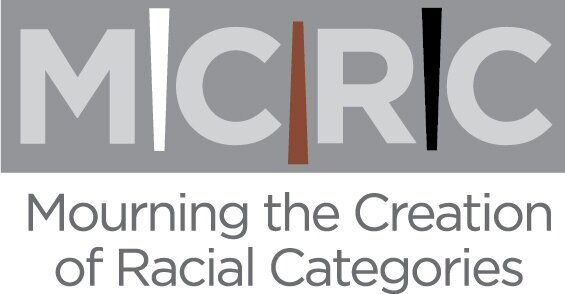MCRC films bring together creative, performing and visual artists to tell the stories of how people in the United States were (and still are) broken apart into unequally-valued racial categories.
All MCRC films address the following questions:
How were people broken apart? Why were even families, friendships and ancestors-descendants broken apart?
How have our identities, families, and communities been built upon the ways we were broken apart?
Film 1: The Categories Black and White
This film, narrated by creative, visual and performing artists, draws attention to the laws and financial incentives enacted in 17th-century Virginia, which planted the seeds for breaking people apart into racial categories. Those laws and incentives thrived through the Jim Crow era (1960s) and were so effective that they were able to break apart the most intimate of human bonds and create irreconcilable divisions.
Film 2: Let Our Loss be Heard
This film tells the tragic story of an enslaved family—Robert and Margaret Garner and her four children, two of whom appeared “almost white”. Our understanding of race and of the racial categories Black and White is strengthened with the telling of this tragic story. It also allows us to explore and process the emotional pain of breaking apart families into Black and White categories.
Film 3: Let Our Loss Be Heard, The Dance
(with commentary from a trauma therapist)
This is a variation on Let Our Loss Be Heard. This film makes dance the primary art form for telling the story of Margaret and Robert Garner and her four children. The dance offers a wordless narrative that inspires audiences to emotionally engage with one woman and her family’s tragedy and connect their story to a larger national tragedy of breaking apart people into White and Black categories.
Films 4 and 5: Why White and I am White Like You, Right Mom?
Why White?
This film opens with a white-appearing patient struggling to declare “White” as his race on a medical form. He asks, “why do my doctors need to know my race?” and “why am I called ‘White’ anyway?” which begins an exploration of how the labels “White” and “Black” came to be and opens the conversation of how White carries the weight of race.
I am White Like You, Right Mom?
In this film, a white-appearing mother must explain to her black-appearing daughter that “you’re not white exactly.” The conversation expands and reveals the story of why, in the U.S., parent and child can be labeled as different races and how race invades the family space.
Forthcoming Film Series
The United States breaks its people into five official racial categories: Black, American Indian or Alaska Native, Asian, White, Native Hawaiian or Other Pacific Islander. Hispanic or Latinx is deemed an ethnic category, not a race. Those labeled Hispanic or Latinx can choose to identify as any race. It is one thing to invent a handful of categories; it is another thing altogether to divide every individual living in the United States into them. How was that done? And why? Each of these films tells the strange story of how a category came to be. Each film shares breaking apart stories that shape the challenges the category endures today.
The Strange Meaning of Being American Indian or Alaska Native in the U.S.
The Strange Meaning of Being Asian in the U.S.
The Strange Meaning of Being Black in the U.S.
The Strange Meaning of Being Hispanic or Latinx in the U.S.
The Strange Meaning of Being Native Hawaiian or Other Pacific Islander in the U.S.
The Strange Meaning of Being White in the U.S.


